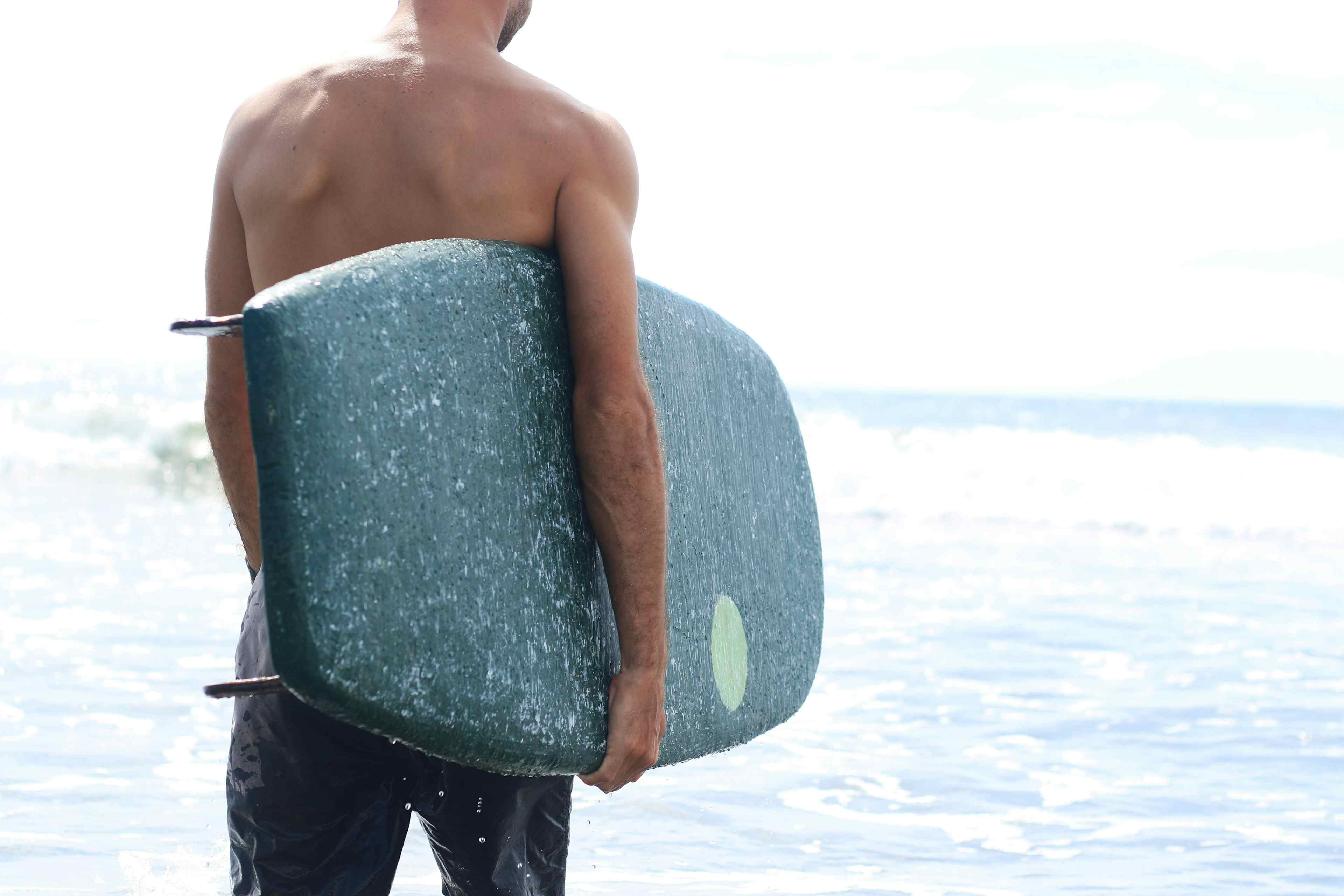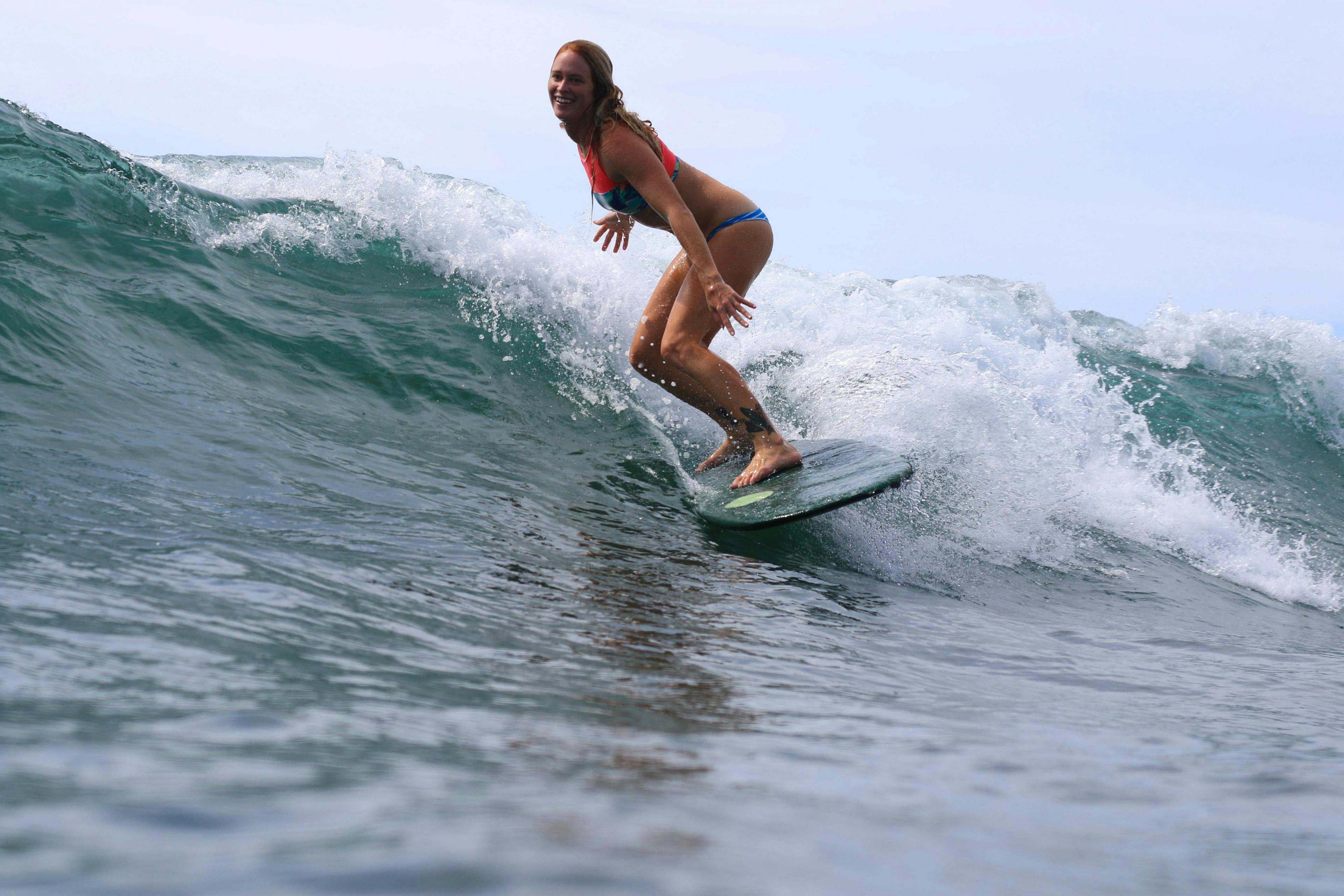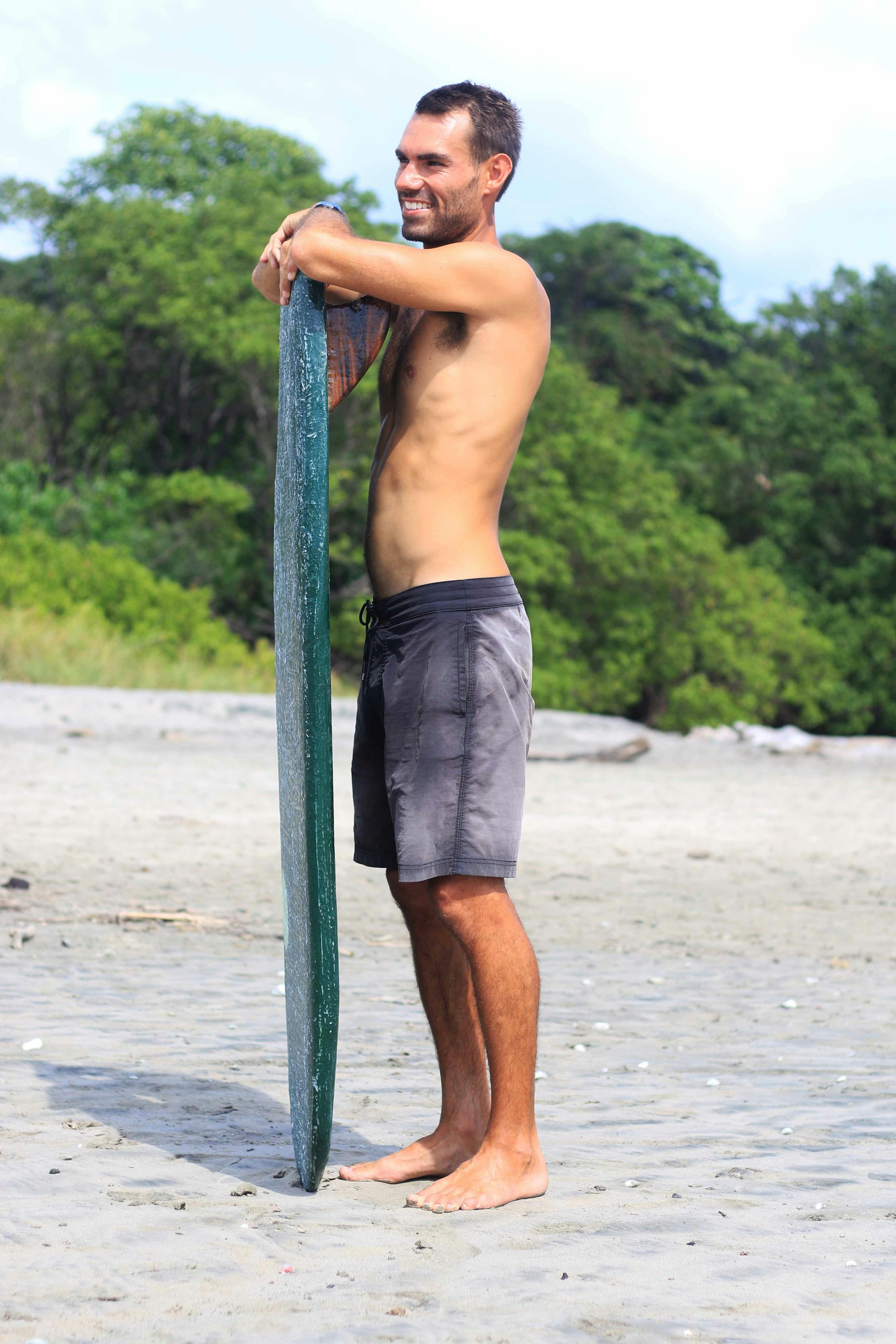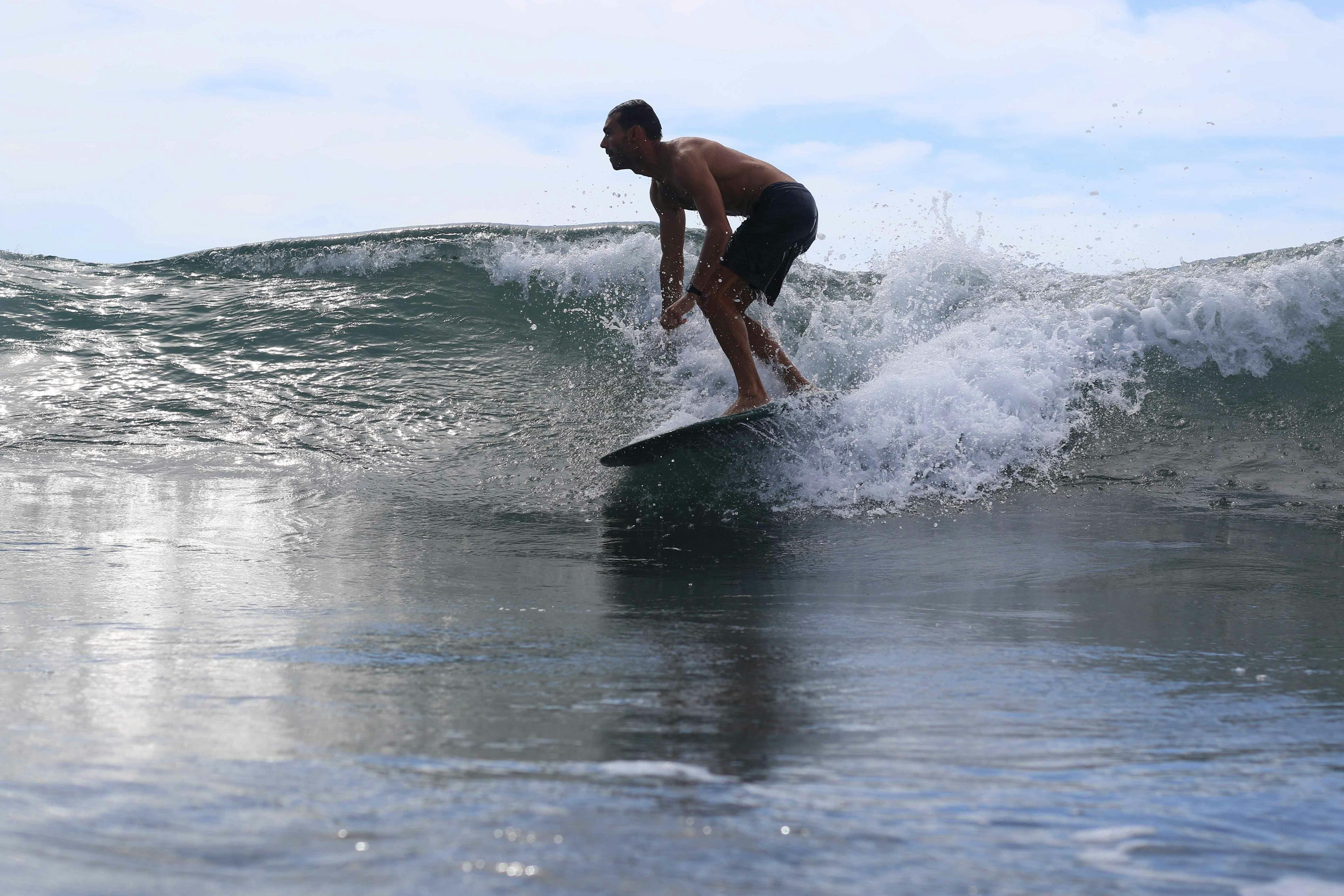SurfboardsDo Try This At Home

Is it possible to make a surfboard, at home, using only items bought from a hardware store, without any shaping experience? Surf Simply coach, Will Forster decided to find out.
“The first thing I’ll say is that it wasn’t easy. I hit emotional elation and tragic lows, after all; resin isn’t always a willing dance partner. But before getting into the somewhat vague details of my surf craft building knowledge and very limited experience, I will mention that I have never felt so proud of a surfboard. With all its lumps and delays and unintentional asymmetry, seeing my girlfriend (luckily she rips) race down the line on a surfboard I’d made, validated my efforts. It felt really good.

So lets get down to business.
Premade blanks are available here in Nosara, but they take time to ship; so as this is an impulse endeavour, I don’t have one. This also explains the lack of mid build photos; I didn’t have an intention to share the process, expecting to hide the Frankenstein board for eternity, but since what I learnt might help another, here we go. A few trips to the hardware store and it would result in something foamy.
Problem number 1: I do not speak fluent Spanish, and so my first trip to the Ferretaria (hardware store) went something like this.
‘Espuma? Para construcción?’
Luckily the boys in the outside bodega where the loot is kept humoured my efforts, and a patient Alfredo lead me through the depths of dry wall and fence panels to the ‘espuma’ (which I later found out was more like sofa cushion foam, not polystyrene. Gracias a Dios for Alfredo). Tall boards of Expanded Polystyrene at 8’x4′ and 2″, 3″ or 4″ thick were available. I went for 3″ expecting to shallow a bit of entry rocker.
Having sourced most of my info from YouTube, I’d heard a lot of horror stories about hand shaping EPS, so let me set one of those straight. If you have no experience in shaping Polyurethane blanks (the other kind), and have nothing better to compare it to, then shaping EPS is not a problem. Eighty grit sandpaper takes it off fairly evenly, so you can still get a smooth round rail, and even edge.
I made a template, stealing design hints from a Tyler Warren ‘Bar of Soap’ and the classic Mini Simmons shape, but opted to make it shorter at 5’0″ to eliminate the need for a stringer.
Some Mini Simmons inspiration, and my target shape:
New 4'6 BAR OF SOAP in stock now. Signed by pickle himself…http://www.iconsofsurf.com/4-6-BAR-OF-SOAP.html
Posted by Icons of Surf on Wednesday, December 14, 2016
I originally began making two boards; the other was a fish for Jessie, but after being sold glue (again a few language barriers in place) that melted the EPS, I had to scrap it.
So my blank was cut out with a hand saw, and shaped with sandpaper; labor intensive but no prior skills required. With a good enough eye for symmetry a basic and crude surfboard appeared.
Fiberglass cloth sourced from the hardware store didn’t come on a roll, but instead in 1m x 1m patches with frayed edges and an $8 price tag; with 4oz, 6oz and 8oz available. I would imagine that cloth on a roll is more accessible in mainland US, so if you have the option, use it!
The main problem wasn’t the price, but the join between two patches. A 5’0″ board takes two 1m x 1m patches, so what do you do in the middle? I chose to lap them by 1 inch as a thick resin layer later meant you wouldn’t likely feel the overlap.
With the blank almost ready, I sourced epoxy resin. It took several trips to different paint and hardware stores to find, and it was at a cost; around $40 per litre, compared to polyester resin at $10 per litre. For better economy, I opted to do the first layer of cloth and resin in epoxy, to seal the EPS from any additional polyester resin layers, then the rest in polyester resin.
Pun time: Normal scissors just don’t cut it.
If you have dress maker scissors, use them. I bought new kitchen scissors, but the serration dragged strands out of the cloth weave and so made the rail wrapped edge messy and untidy. As the resin dried I went round with a blade to neaten any hanging strands as these would have to be sanded back when cured (a way more time consuming job).
The temperature here in Costa Rica ranges from 70’F-100’F, with moisture levels as dramatic. Resin cure time can depend on these factors, and I unfortunately learnt this on the job.

Two layers of 4oz on both the deck and bottom, with a brush coated dark green covered any blemishes and I opted for a Thomas Campbell inspired mint green circle in place of a logo (i’m just a nobody after all) finished with a hot coat.
There we have it, I had a new surfboard.
We surfed it at waist high and onshore to surprising success. It was buoyant, fast, and had a fun flex pattern. The wide placed hardwood fins (another homemade venture) felt strong and held the tail enough to feel in control.

What I’d do differently? If you want to take this more seriously, then just buy a blank. I have since acquired a polyurethane Arctic Foam blank with rocker and a stringer already in. It will become a 5’5″ fish. I’ll still be using the cheaper polyester resin, and badly brush painted, but stringer strength and a more accurate rocker will create a longer lasting and more versatile board. My first has already been retired and wall hung. Perhaps number 2 will be inspired by the Ryan Burch Rainbow fish from Psychic Migrations.
Sure, nothing I make any time soon will ride like an experienced shaper’s, but I now have one board to my name, and next month I might have two. So why not start somewhere and just figure it out.”